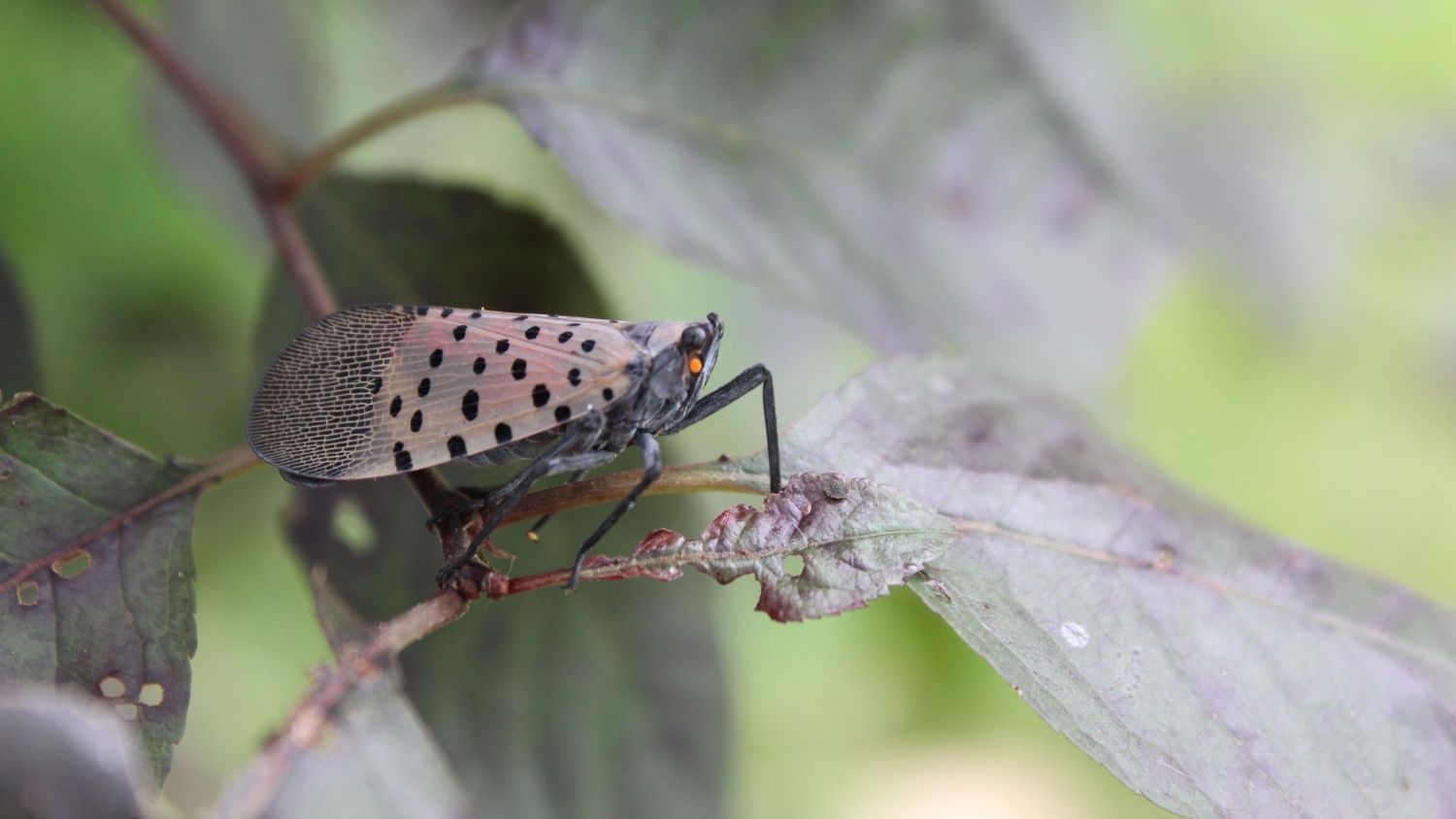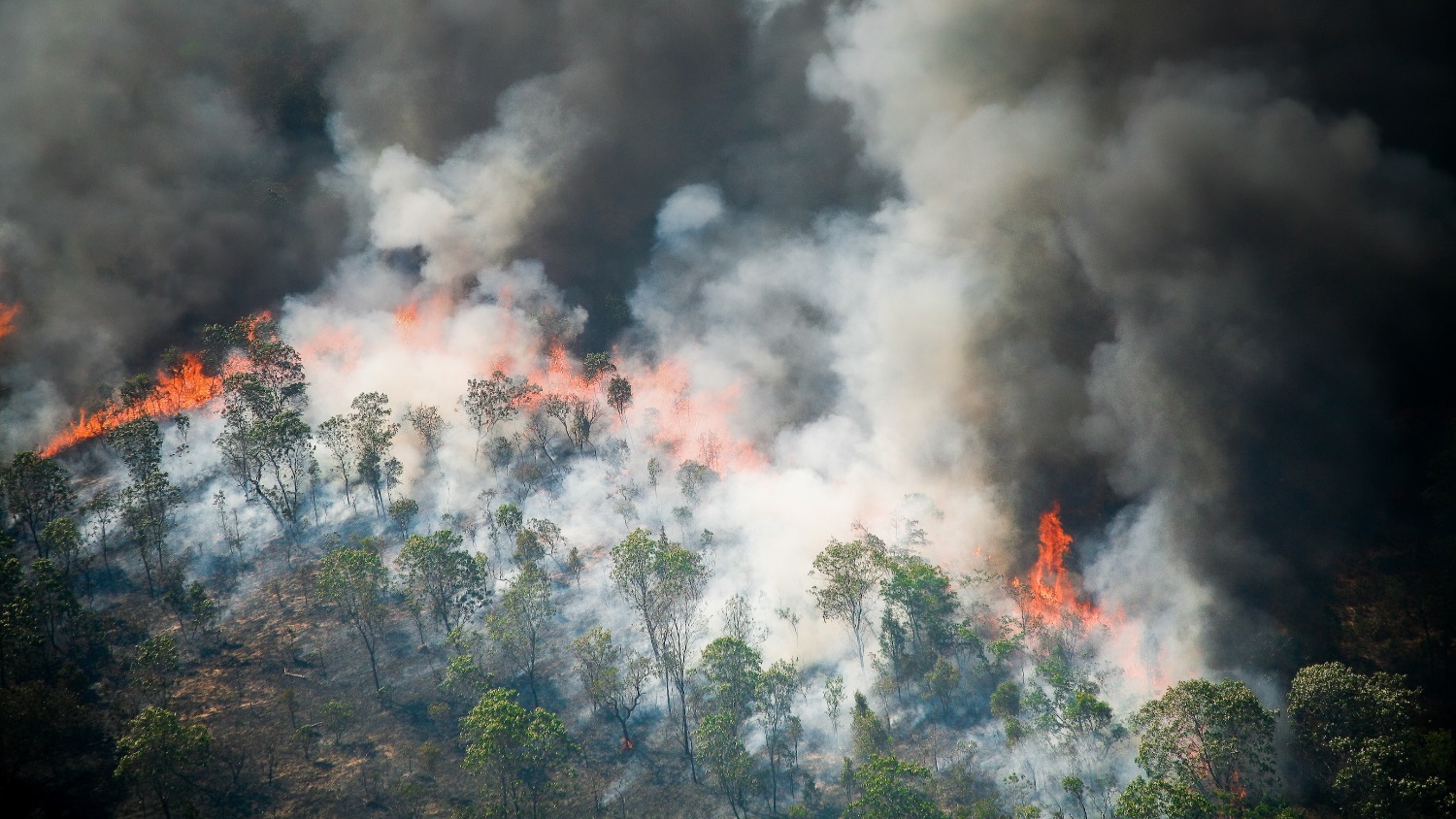Spotted Lanternfly: Everything You Need to Know About the Invasive Insect
NC State expert Kelly Oten discusses the spread of the spotted lanternfly and the potential impacts of the invasive insect on the environment and economy.

The spotted lanternfly is a nonnative, invasive planthopper originally found in China, Taiwan and Vietnam. It poses significant threats to agriculture and tourism, and has been known to attack over 70 woody plant species.
The insect was first detected in Pennsylvania in 2014, and has since spread to surrounding states. A population was recently found in Hillsville, Virginia, 20 miles from the Virginia-North Carolina border.
We reached out to Kelly Oten, assistant professor and extension specialist in the Department of Forestry and Environmental Resources, to tell us more about how the spotted lanternfly could impact North Carolina and how we can help to prevent its spread.
Do you think the spotted lanternfly will appear in North Carolina anytime soon?
Unfortunately, yes. This insect has shown time and time again that it’s capable of spreading quickly both on its own and through accidental transport by humans. That, coupled with the fact that there is a population of spotted lanternfly less than 20 miles from our state line, means it is just a matter of time.
What environmental and economic impacts could the spotted lanternfly have on North Carolina?
The impacts of spotted lanternfly will be substantial. It is an agricultural pest, most notably on grapevines. Not only do they greatly reduce yield, but remaining grapes have lower sugar content and overall plant health suffers.
Spotted lanternfly is also going to be a significant landscape pest. It attacks more than 70 species of plants, including many ornamentally-planted species like rose, maple, and river birch. While they usually do not kill their hosts, they can weaken it through extended feeding and leave behind copious amounts of honeydew. Honeydew is a sweet and sticky excrement of many plant-sucking insects that is messy, allows for the growth of unattractive sooty mold, and attracts stinging insects.
Spotted lanternfly will also be a huge public nuisance. They aggregate in large numbers and have been known to swarm restaurant doors, enter local businesses, fly up people’s shirts, and amass on outdoor furniture, toys and trees. Everyone will know and loathe this insect.
How quickly does the species increase its range and what contributes to its spread?
Spotted lanternfly is spreading very quickly. It can spread on its own, but is not a strong flier. The greater issue is the accidental transportation of this insect by humans. The inconspicuous egg masses are laid on all types of materials, many of which are moved around, such as vehicles, outdoor furniture and firewood.
Accidental movement of an egg mass is suspected to be the pathway by which spotted lanternfly was originally introduced to the United States, so it is no surprise that it continues to spread this way. In addition, nymphs and adults, though more easily spotted, can hitchhike on landscape plants or other items being moved around.
Are there any effective methods for controlling the spread of spotted lanternfly?
Quarantines aiming to reduce the spread of spotted lanternfly mandate that businesses operating within the quarantine zone obtain a spotted lanternfly permit. Permit holders are trained in spotted lanternfly identification and protocols for vehicle and commodity inspections. Efficacy of quarantines can be difficult to assess, but it likely plays a great role in reducing spread.
The public can also play a big role in reducing movement or reporting new finds. We have increased educational efforts in North Carolina to familiarize the public with spotted lanternfly identification and reporting protocols. Through our collaborative program, Poolside Pests (poolsidepests.com), we have reached over 55,000 people on social media, partnered with 50 pool supply companies to distribute educational materials, and led to 26 reports of suspected spotted lanternfly that were fortunately all negative.
What should we do if we see a spotted lanternfly or egg masses?
Report it. More specifically, take a picture, kill it, then report it. The sooner we know about an infestation, the greater our chances are of controlling it. The NC Department of Agriculture & Consumer Services responds to reports quickly and is poised to react if a population is found. Reports should be sent to badbug@ncagr.gov.


